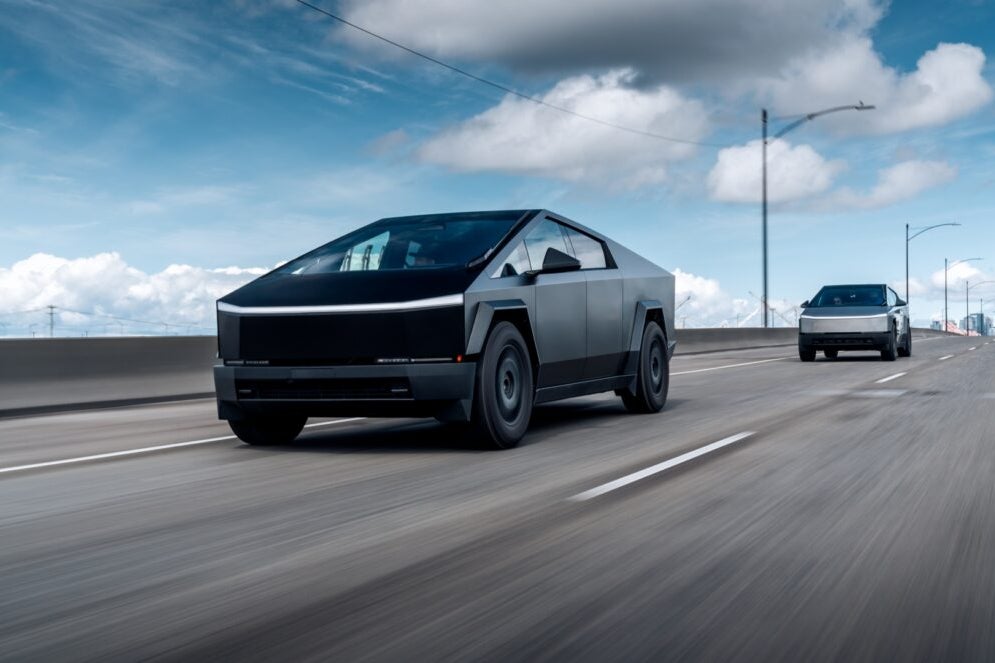How BYD’s ‘God’s Eye’ and Huawei’s LIDAR Innovations Challenge Tesla’s Dominance
The electric vehicle (EV) market is witnessing a seismic shift as innovations from BYD and Huawei introduce powerful technologies that challenge Tesla’s longstanding dominance. Notably, BYD’s ‘God’s Eye’ and Huawei’s advancements in LIDAR systems are at the forefront of this evolution, potentially redefining the future of autonomous driving. Industry experts, including renowned analyst Ross Gerber, emphasize the implications of these advancements, particularly the critical role of LIDAR in navigating the competitive landscape of electric mobility.
Understanding BYD’s ‘God’s Eye’ Technology
BYD, a Chinese automotive giant, has made significant strides in the EV sector, and its ‘God’s Eye’ technology is a testament to its innovative spirit. This advanced system employs a combination of high-definition cameras, radar, and LIDAR, facilitating enhanced perception of the vehicle’s surroundings. The integration of these technologies allows for superior environmental awareness, enabling vehicles to detect and respond to obstacles with remarkable accuracy.
Key features of BYD’s ‘God’s Eye’ technology include:
- 360-Degree Awareness: The system provides comprehensive coverage of the vehicle’s surroundings, allowing for real-time data collection from all angles.
- Advanced Object Recognition: By leveraging artificial intelligence (AI), the technology can distinguish between various objects, such as pedestrians, cyclists, and other vehicles.
- Seamless Integration: ‘God’s Eye’ is designed to work in tandem with BYD’s autonomous driving systems, enhancing safety and performance.
This technology positions BYD as a formidable competitor to Tesla, particularly in the realm of safety and reliability, which are paramount for consumers considering autonomous vehicles.
Huawei’s LIDAR Innovations: A Game Changer
Meanwhile, Huawei, a leader in telecommunications and technology, has also made impressive advancements in LIDAR technology aimed at improving autonomous driving capabilities. LIDAR, which stands for Light Detection and Ranging, uses laser beams to create high-resolution maps of the environment. This technology is crucial for precise navigation and obstacle avoidance in autonomous vehicles.
Huawei’s LIDAR systems boast several advantages:
- High Accuracy: Huawei’s LIDAR provides accurate distance measurements, crucial for real-time decision-making in self-driving scenarios.
- Robust Performance in Various Conditions: Unlike traditional cameras, LIDAR performs well in low-light and adverse weather conditions, ensuring reliability in diverse environments.
- Integration with Existing Systems: Huawei’s technology can be seamlessly integrated into existing automotive frameworks, making it an attractive option for manufacturers looking to enhance their vehicles with advanced autonomous features.
With these innovations, Huawei is not just competing in the EV space but is also setting new standards for safety and efficiency in autonomous driving.
The Role of LIDAR in Autonomous Driving
As the battle for electric vehicle supremacy intensifies, the role of LIDAR cannot be overstated. Unlike Tesla’s approach, which primarily relies on camera-based systems and AI to interpret data, both BYD and Huawei are incorporating LIDAR as a fundamental component of their autonomous technologies. The implications of this shift are profound:
- Enhanced Safety: The precise mapping capabilities of LIDAR can drastically reduce accidents caused by misinterpretation of visual data.
- Improved Navigation: LIDAR enables vehicles to navigate complex environments more effectively, particularly in urban settings where obstacles can be unpredictable.
- Consumer Confidence: As safety concerns remain a significant barrier to widespread adoption of autonomous vehicles, the integration of LIDAR technology can help build trust among consumers.
Implications for Tesla
Tesla has long been viewed as the leader in the electric vehicle market, primarily due to its pioneering work in autonomous driving technologies. However, the emergence of BYD’s ‘God’s Eye’ and Huawei’s LIDAR systems presents a formidable challenge. Ross Gerber, an industry expert, notes that Tesla’s reliance on a camera-centric approach might not hold up against the comprehensive capabilities offered by LIDAR-equipped systems.
Gerber highlights several key implications for Tesla:
- Market Competition: As BYD and Huawei enhance their offerings, Tesla may face increased pressure to adapt its technology or risk losing market share.
- Innovation Pressure: To maintain its leadership position, Tesla will need to invest in new technologies, including LIDAR integration, to ensure its vehicles remain competitive.
- Consumer Perception: As consumers become more aware of the safety advantages of LIDAR, Tesla may need to address concerns about its current technology’s limitations.
Looking Ahead: The Future of the EV Market
The advancements made by BYD and Huawei signify a turning point in the EV landscape. As the market becomes increasingly competitive, the emphasis on safety, reliability, and advanced technology will shape consumer choices. The integration of LIDAR and other innovative systems will likely become standard features in new electric vehicles, pushing manufacturers to elevate their game.
Moreover, as consumers continue to demand vehicles that not only meet their mobility needs but also ensure their safety, companies that prioritize these aspects will likely emerge as leaders in the evolving automotive landscape. The race is on, and with technologies like BYD’s ‘God’s Eye’ and Huawei’s LIDAR innovations, the future of electric vehicles is brighter and more promising than ever before.
Conclusion
In summary, BYD’s ‘God’s Eye’ technology and Huawei’s LIDAR innovations present a significant challenge to Tesla’s dominance in the electric vehicle market. As competition heats up, the focus on advanced safety features and reliable autonomous driving technologies will shape the industry’s future. With experts like Ross Gerber emphasizing the importance of LIDAR, it’s clear that the next phase of the EV revolution will be defined by innovation, safety, and consumer trust.
See more Future Tech Daily

